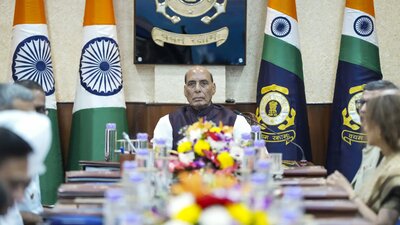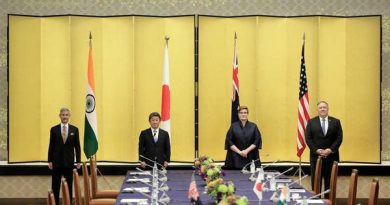India-Australia Defence Partnership Strengthens Strategic and Global Security Ties
Sydney – India and Australia are set to deepen their bilateral defence cooperation through three new agreements focused on information sharing, maritime security, and joint military activities.
This milestone comes as both nations celebrate five years of their comprehensive strategic partnership, underscoring a growing commitment to regional stability, operational collaboration, and global peace.
The agreements will be formalized during Defence Minister Rajnath Singh’s visit to Australia, which includes high-level discussions with Deputy Prime Minister and Defence Minister Richard Marles, as well as a business roundtable in Sydney with leading industry figures from both countries.
The visit marks the first-ever visit of an Indian defence minister to Australia under the current government, symbolizing the maturity and importance of the partnership.
Over the years, India-Australia defence engagements have evolved to include wide-ranging interactions between the armed services, military-to-military exchanges, high-level visits, capacity-building initiatives, and advanced training programmes.
Collaboration extends to maritime operations, combat exercises, and shared strategic planning, reflecting a comprehensive approach to ensuring regional and global security.
One highlight of this partnership is the upcoming fourth edition of the “AustraHind” joint combat exercise, scheduled at Irwin Barracks in Perth. Conducted from October 13 to 26, the exercise will focus on joint company-level operations in urban and semi-urban terrains, under the framework of the United Nations mandate.
This training aims to enhance interoperability, strengthen tactical skills, and build shared operational capabilities, demonstrating both countries’ commitment to international peacekeeping and cooperative defence.
In addition to ground-based exercises, India and Australia actively participate in naval operations that ensure maritime security across the Indo-Pacific region. Australia, along with Japan, regularly participates in the prestigious quadrilateral Malabar naval exercise.
Originally a bilateral exercise between India and the United States in 1992, Malabar has expanded to include all “Quad” countries, providing a platform for strategic collaboration and enhancing regional stability. The next edition of the exercise will be conducted off Guam in the Western Pacific, showcasing the growing scope of multilateral military cooperation.
Another important pillar of the India-Australia defence relationship is the military logistics agreement, which allows for reciprocal refuelling, repair, and berthing facilities for warships and aircraft.
This framework aligns with India’s existing logistics agreements with other leading global partners, including the United States, France, Japan, South Korea, and Singapore. Such arrangements not only enhance operational efficiency but also strengthen trust and strategic connectivity between allied nations.
The defence collaboration also encompasses defence-industrial initiatives, aimed at intensifying and diversifying joint research, development, and manufacturing efforts. Both nations are committed to advancing technology, sharing expertise, and promoting sustainable defence capabilities that can contribute to global security infrastructure.
This partnership aligns with their shared vision of a free and open Indo-Pacific, a principle that emphasizes stability, freedom of navigation, and collaborative security measures in one of the world’s most dynamic regions.
From an international perspective, the India-Australia partnership serves as a model for constructive strategic engagement. By combining military cooperation with technological collaboration and diplomatic dialogue, both countries are demonstrating how bilateral ties can contribute positively to regional and global peace.
The partnership strengthens not only defence readiness but also economic and technological collaboration, creating new opportunities for innovation and joint industry development.
In conclusion, India’s Defence Minister’s visit to Australia highlights a flourishing relationship built on trust, shared strategic goals, and a commitment to regional and global security.
Through joint exercises, multilateral naval engagements, defence-industrial collaboration, and advanced logistics frameworks, India and Australia are showcasing the positive potential of international cooperation. Their partnership stands as a beacon of how countries can come together to strengthen defence, promote stability, and foster sustainable growth for the broader Indo-Pacific region.



